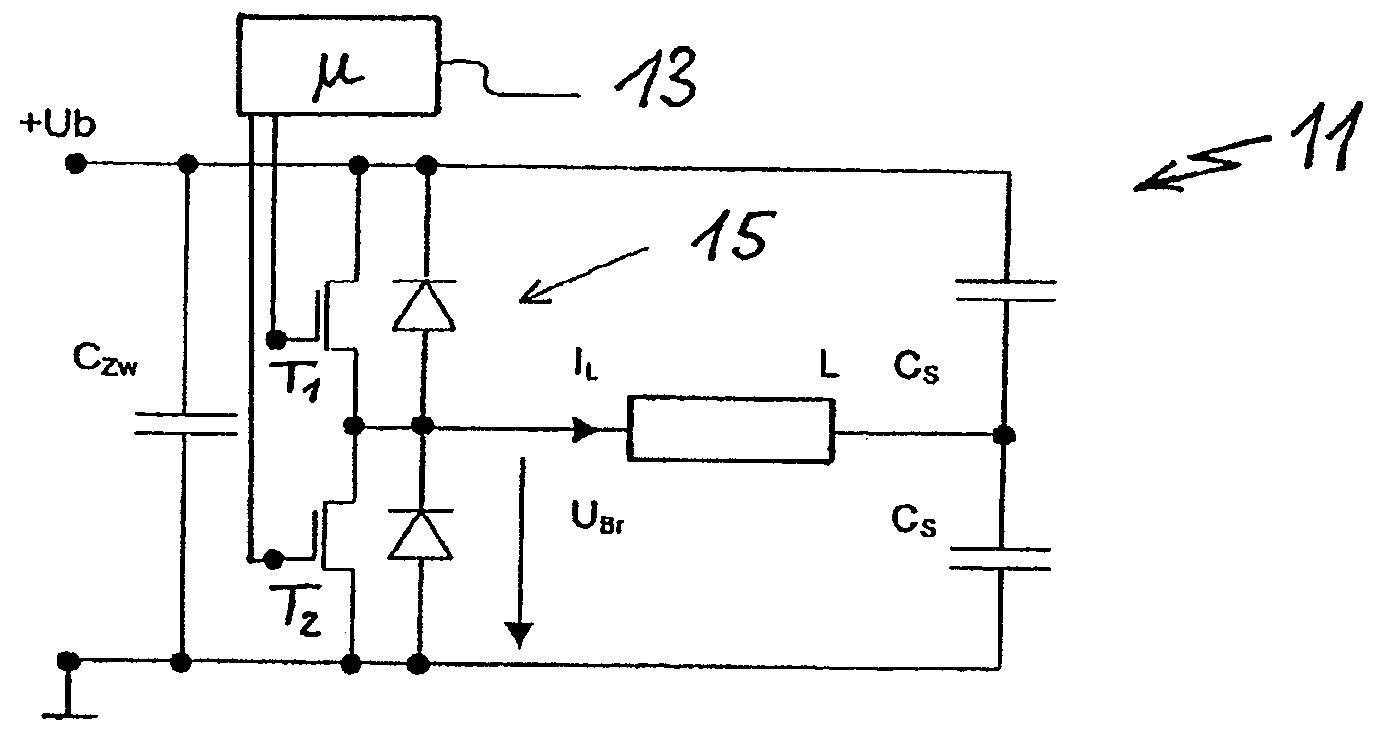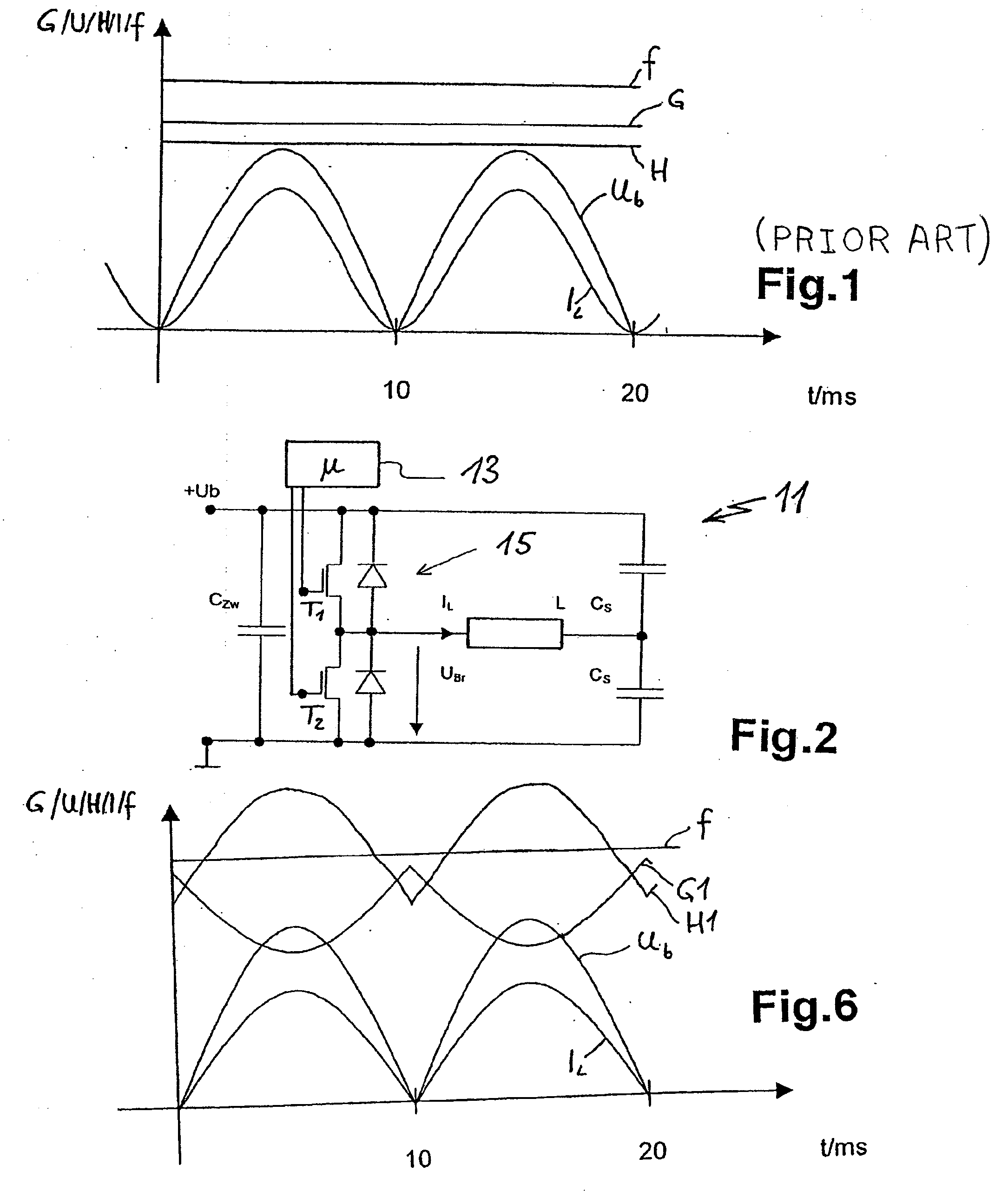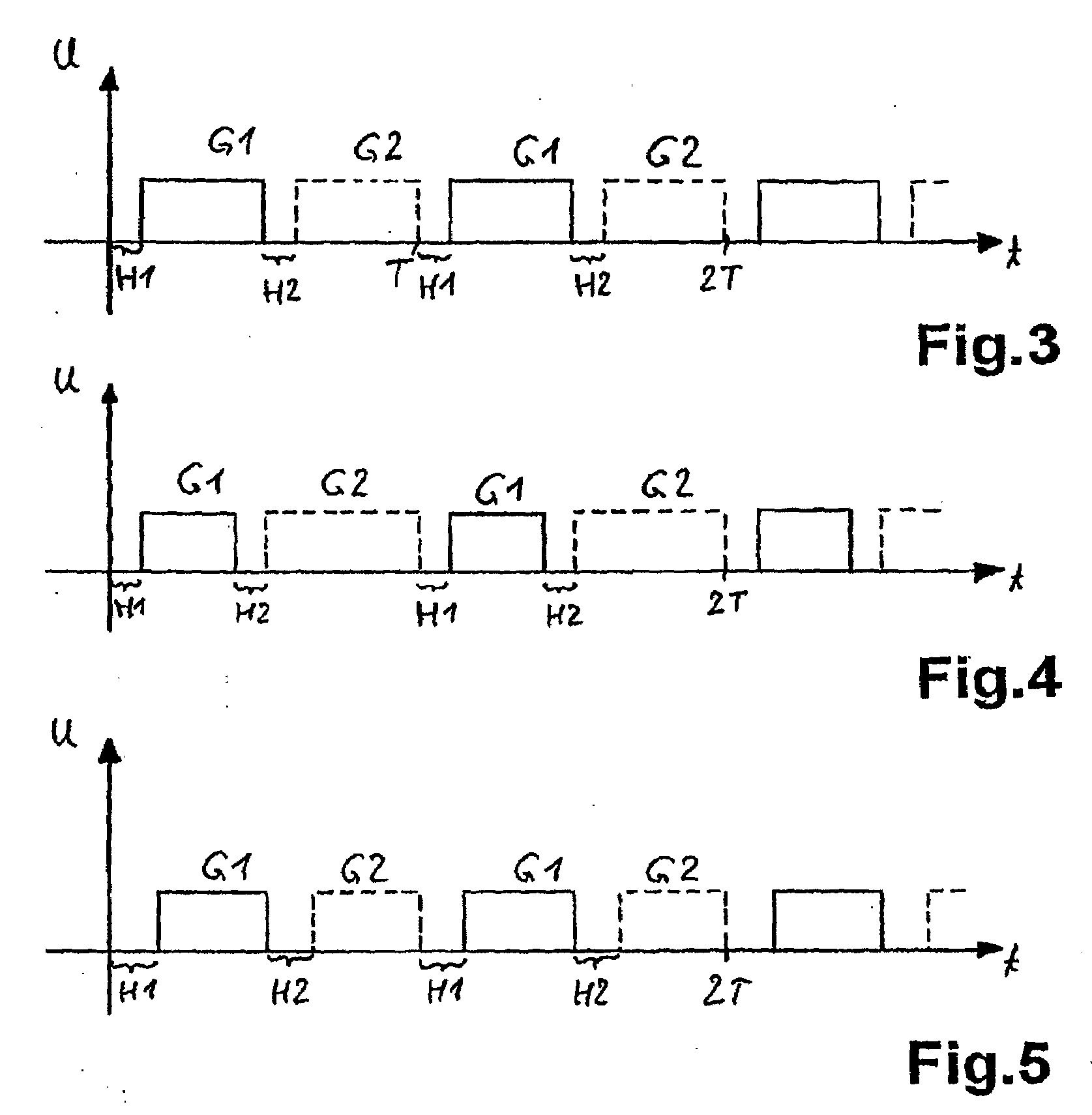Method and arrangement for the power supply of an induction heating device
a technology of induction heating and power supply, which is applied in the direction of dc-dc conversion, power conversion systems, instruments, etc., can solve the problems of complicated operating frequency change and distortion of power consumption from mains supply
- Summary
- Abstract
- Description
- Claims
- Application Information
AI Technical Summary
Benefits of technology
Problems solved by technology
Method used
Image
Examples
first embodiment
[0030]In accordance with the aforementioned, first embodiment of the invention in FIG. 4, the pulse widths are modified. This means that for the same dead times H1 and H2 the pulse widths at transistor T1, i.e. G1, have become shorter and are in fact shortened by approximately 25% close to the high point of a network half-wave. The pulse widths G2 at transistor T2 are lengthened by approximately 25%. As a result of these different pulse widths, the power level at the induction coil is reduced somewhat for an unchanged operating frequency f. As can be gathered from FIG. 6, the change to the pulse widths G1 is once again a sinusoidal curve or has a sinusoidal path. The minimum pulse width G1 is at the middle or high point of a network half-wave. The not shown path G2 is obtained on reflecting the path for G1 on a line which runs horizontally through the maximum values for G1 in such a way that the sum (G1+G2) is always constant.
second embodiment
[0031]In accordance with the invention, FIG. 5 shows that, diverging from FIG. 4, admittedly the pulse widths G1 and G2 remain the same, but the dead times H1 and H2 between them are changed. The dead times H1 and H2, i.e. prior to the given pulse width G1 and G2, are lengthened by approximately 60% compared with FIG. 3. Here again the diagrammatic path for H1 can be gathered from FIG. 6 and is the same for H2.
[0032]Also, with this method of modifying the dead times H, for a constant operating frequency it is possible to achieve a more sinusoidal or precisely sinusoidal power consumption IL and this effect can also be gathered from FIG. 6.
[0033]It is obvious that also both embodiment of the invention can be jointly used. In both cases, the change to the pulse width or dead time over a network or mains voltage half-wave should take place in an analogous or mirror symmetrical manner or in small steps. Thus, on the one hand it is possible to reduce or prevent the formation of harmonics...
PUM
 Login to View More
Login to View More Abstract
Description
Claims
Application Information
 Login to View More
Login to View More - R&D
- Intellectual Property
- Life Sciences
- Materials
- Tech Scout
- Unparalleled Data Quality
- Higher Quality Content
- 60% Fewer Hallucinations
Browse by: Latest US Patents, China's latest patents, Technical Efficacy Thesaurus, Application Domain, Technology Topic, Popular Technical Reports.
© 2025 PatSnap. All rights reserved.Legal|Privacy policy|Modern Slavery Act Transparency Statement|Sitemap|About US| Contact US: help@patsnap.com



